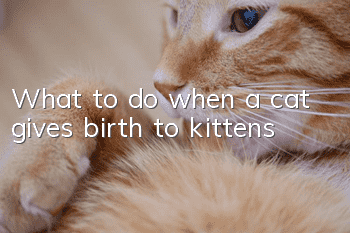Basic knowledge of cat heart auscultation, which novice cat owners should understand!

Heart auscultation
Novice cat owners should understand the basic knowledge of cat heart auscultation! In the physical examination of cats, heart sound auscultation is essential, and it is also the most meaningful clinical examination of animal heart. This link is no less important than cardiac imaging examination. A routine heart sound auscultation can provide a lot of information and help diagnose the disease. However, heart auscultation seems very simple, but there is a lot worth exploring.
1. What are heart sounds?
In each cardiac cycle of a healthy cat, two rhythmic alternating sounds, called heart sounds, can be heard. The former is called the first heart sound, and the latter is called the second heart sound. Cats will have the third and fourth heart sounds under pathological conditions. The third heart sound is after the second heart sound, and the fourth heart sound is before the first heart sound. During the fetal period, fetal heart sounds are present.
The first heart sound occurs during ventricular systole, so it is also called systolic heart sound. The two atrioventricular valves close at the same time, the ventricular muscles contract, and the blood flow impacts the arterial wall. The pitch is low, dull, long in duration, and has a long ending.
The second heart sound occurs during ventricular diastole, so it is also called diastolic heart sound. It is a vibration sound produced by the simultaneous closure of the aortic valve and pulmonary valve. The pitch is high, the duration is short, and the ending is short.
The third heart sound occurs in the early diastole of the ventricle. It is caused by the rapid flow of blood from the atrium into the ventricle, causing the ventricular wall to vibrate. The sound is weak, short and low. For normal cats, the third heart sound cannot be auscultated. If a pathological third heart sound is heard, it is seen in cats with congestive heart failure or ventricular hypertrophy.
The fourth heart sound, also known as atrial sound, is produced by the vibration of atrium contraction. Cats cannot be heard under normal circumstances. If heard, it is a pathological fourth heart sound, which is seen in atrioventricular conduction block, etc.
Fetal-like heart sounds are normally seen in the beating of the fetal heart. Pathologically, it is seen in cats with severe cardiac insufficiency or acute heart failure. Due to the compensatory acceleration of the heartbeat, the diastolic period is shortened. The interval between the first and second heart sounds becomes equal. The intensity and timbre of the two heart sounds also become similar.
2. How to distinguish the first heart sound and the second heart sound?
Under normal conditions, the difference is based on the tonal characteristics of the first and second heart sounds; according to the difference between the pulse, the first heart sound is synchronous with the pulse, and the second heart sound is out of sync; Time interval, the short interval is preceded by the first heart sound and followed by the second heart sound. The long interval is preceded by the second heart sound and followed by the first heart sound. It is not applicable under pathological conditions, such as when premature ventricular contractions occur and the pulse does not match the heart sound. At this time, it can be distinguished based on the ECG waveform.
3. Cat heart auscultation method
Auscultate the animal in a standing position (to keep the heart in a normal anatomical position to avoid murmurs caused by abnormal body positions, such as with chest wallfriction sound);
Auscultate at points on the chest wall (3 auscultation points on the left chest wall, 1 auscultation point on the right chest wall), all points need to be auscultated (such as only auscultating the mitral valve position in cats Congenital heart disease in young cats may be missed);
Auscultate the heart and lungs separately (to avoid confusing heart murmurs and breath sounds);
Auscultation of heart sounds in cats is difficult and requires Comprehensive consideration of various influences:
a. Because the heart is relatively small, the auscultation position can change by slightly moving the stethoscope;
b. The heart may develop "" as the age increases "Lodging", resulting in changes in the auscultation position;
c. The heart murmur is usually milder than in cats;
d. The heart rate is faster;
e. Others. Such as grunting; some heart murmurs can be expressed by accelerating the heart rate. If arrhythmia is found, further examination (ECG) is required
4. Changes in heart rate frequency
Under normal circumstances, two heart sounds can be heard in each cardiac cycle, and the number of cardiac cycles per minute is the heart rate. Pathological changes in heart rate include tachycardia and bradycardia.
5. Changes in heart sound intensity
The intensity of heart sounds is determined by two factors: the heart sound itself and the heart sound conduction medium. Clinically, there are two changes: heart sound enhancement and heart sound weakening. When determining whether the heart sounds are enhanced, auscultation must be performed at the apex and base of the heart. If both locations are enhanced or weakened, the heart sounds are considered to be enhanced or weakened.
Factors of the heart sound itself: myocardial contractility, heart valve status, circulating blood volume
Factors of the conduction medium: thickness of the chest wall, status of the heart lobes of the lungs, status of the pleural cavity and pericardial cavity .
6. Precautions for auscultation
Before auscultation, you should first feel the heart beat on the surface of the chest wall to find the strongest pulsation site. Begin auscultating the site and discerning its intensity. An experienced veterinarian can tell whether an increased heartbeat is due to excitement or an enlarged heart. Usually an increased heartbeat caused by excitement will weaken as the animal calms down. The membrane-surface listening head of the stethoscope can collect higher-frequency sounds and is suitable for auscultation of normal first and second heart sounds. Abnormal heart sounds can be divided into short heart sounds (such as split heart sounds or gallop S3 or S4) and longer heart sounds (most heart murmurs). The gallop is a low-frequency diastolic sound that should be heard using a bell-shaped headset. For a single-head stethoscope, close to the chest wall and apply slight pressure to achieve the membrane-surface auscultation effect, while lightly touching the chest wall will result in a bell-shaped stethoscope. Heart murmurs are usually caused by turbulent or high-velocity blood flow within the heart or large blood vessels. Auscultation should be performed in a quiet room, as wheezing can make auscultation more difficult. When auscultating a cat, try placing it close to running water or an alcohol cotton ball to avoid interference from the cat’s wheezing sounds.. Sometimes breath sounds may be mistaken for heart murmurs, and it is necessary to observe the animal's breathing process while auscultating for identification. A variety of disturbances can affect auscultation, including tremors, myotremors, hair rubbing against the stethoscope, gastrointestinal peristaltic sounds, and room noise.
- What’s the reason for the cat’s heartbreaking meowing?
- Will cats eat live rabbits?
- Newborn kitten drools and refuses to feed
- Will cats have trouble adapting to changing cat litter?
- How to make two cats get along peacefully
- How many ham sausages do kittens eat a day?
- Is it normal for kittens to have black dirt in their ears?
- Can cats eat roasted pumpkin?
- Is it cat plague if a kitten has bloody diarrhea?
- How to use pine cat litter



